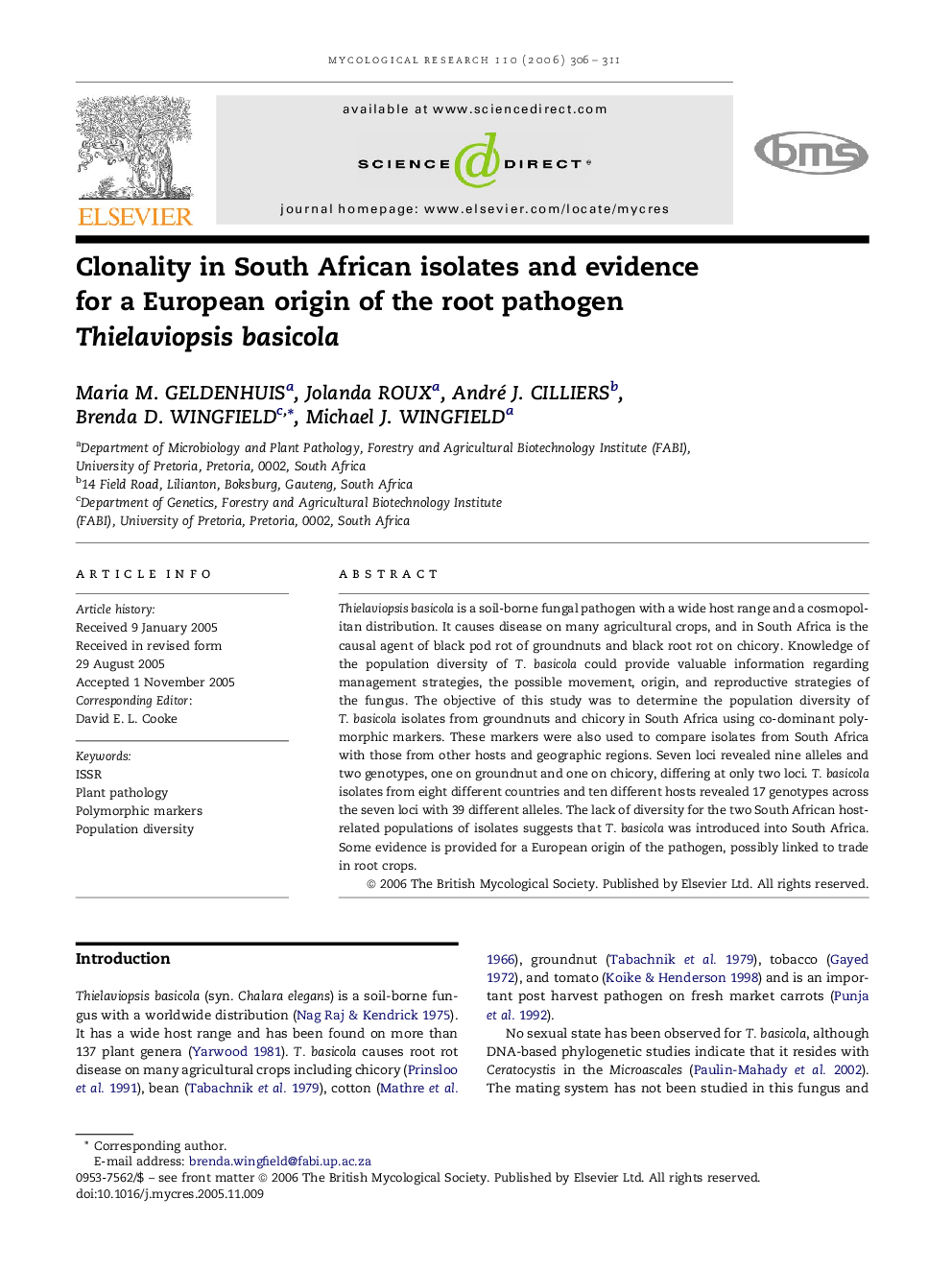| Article ID | Journal | Published Year | Pages | File Type |
|---|---|---|---|---|
| 4358179 | Mycological Research | 2006 | 6 Pages |
Thielaviopsis basicola is a soil-borne fungal pathogen with a wide host range and a cosmopolitan distribution. It causes disease on many agricultural crops, and in South Africa is the causal agent of black pod rot of groundnuts and black root rot on chicory. Knowledge of the population diversity of T. basicola could provide valuable information regarding management strategies, the possible movement, origin, and reproductive strategies of the fungus. The objective of this study was to determine the population diversity of T. basicola isolates from groundnuts and chicory in South Africa using co-dominant polymorphic markers. These markers were also used to compare isolates from South Africa with those from other hosts and geographic regions. Seven loci revealed nine alleles and two genotypes, one on groundnut and one on chicory, differing at only two loci. T. basicola isolates from eight different countries and ten different hosts revealed 17 genotypes across the seven loci with 39 different alleles. The lack of diversity for the two South African host-related populations of isolates suggests that T. basicola was introduced into South Africa. Some evidence is provided for a European origin of the pathogen, possibly linked to trade in root crops.
